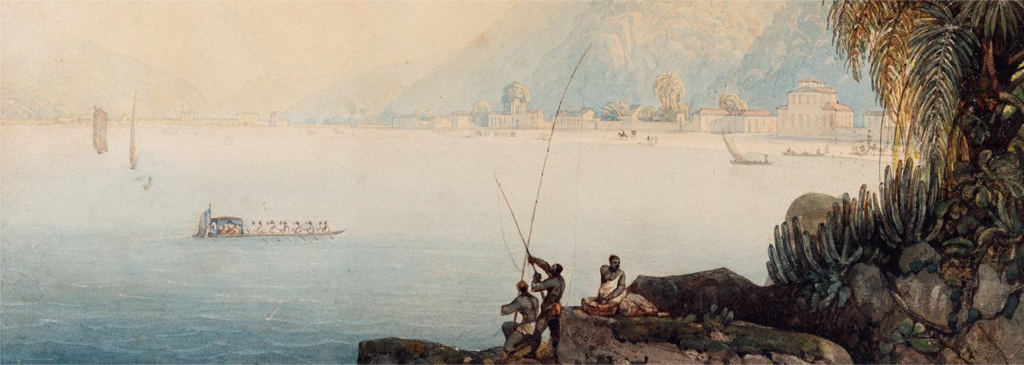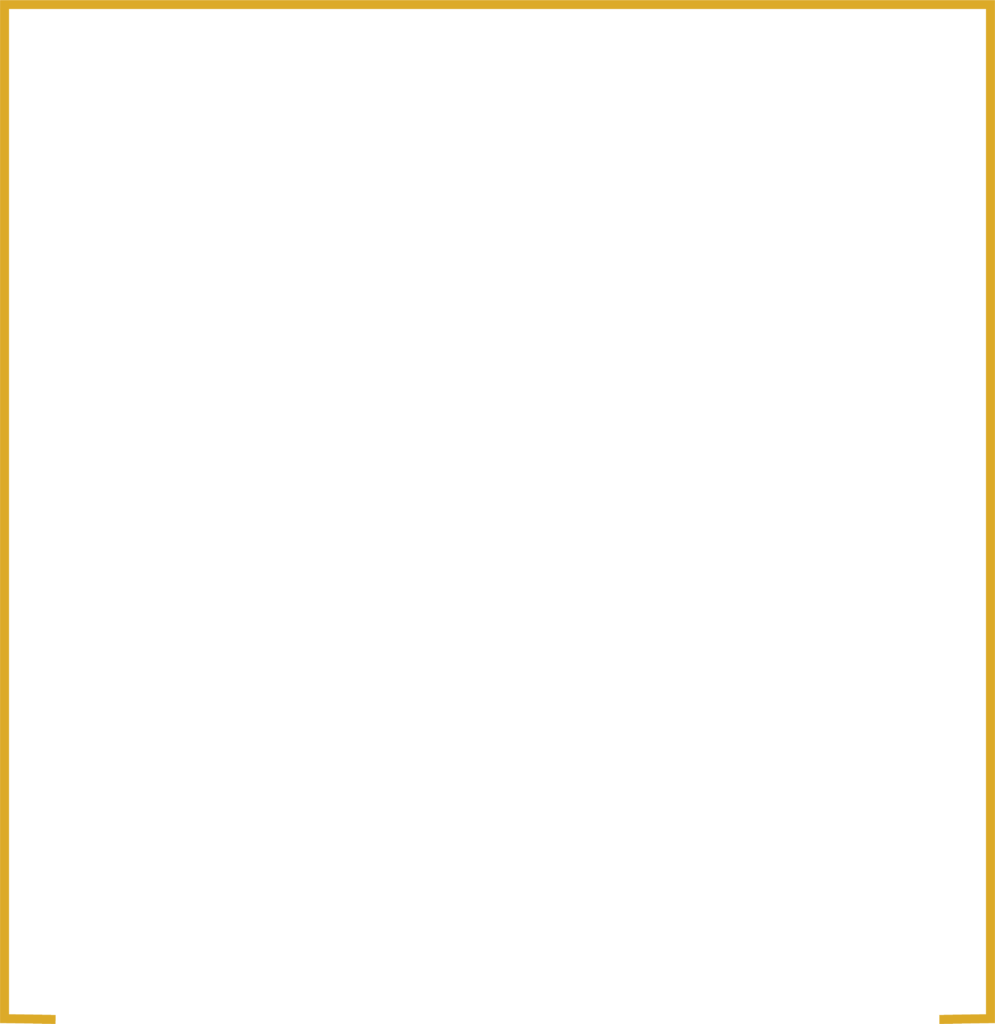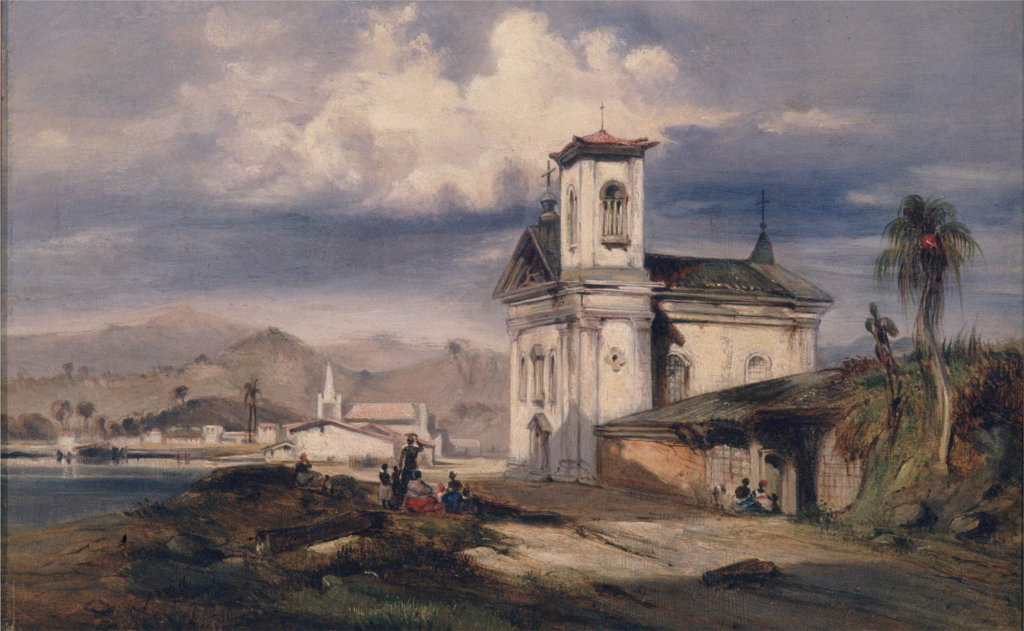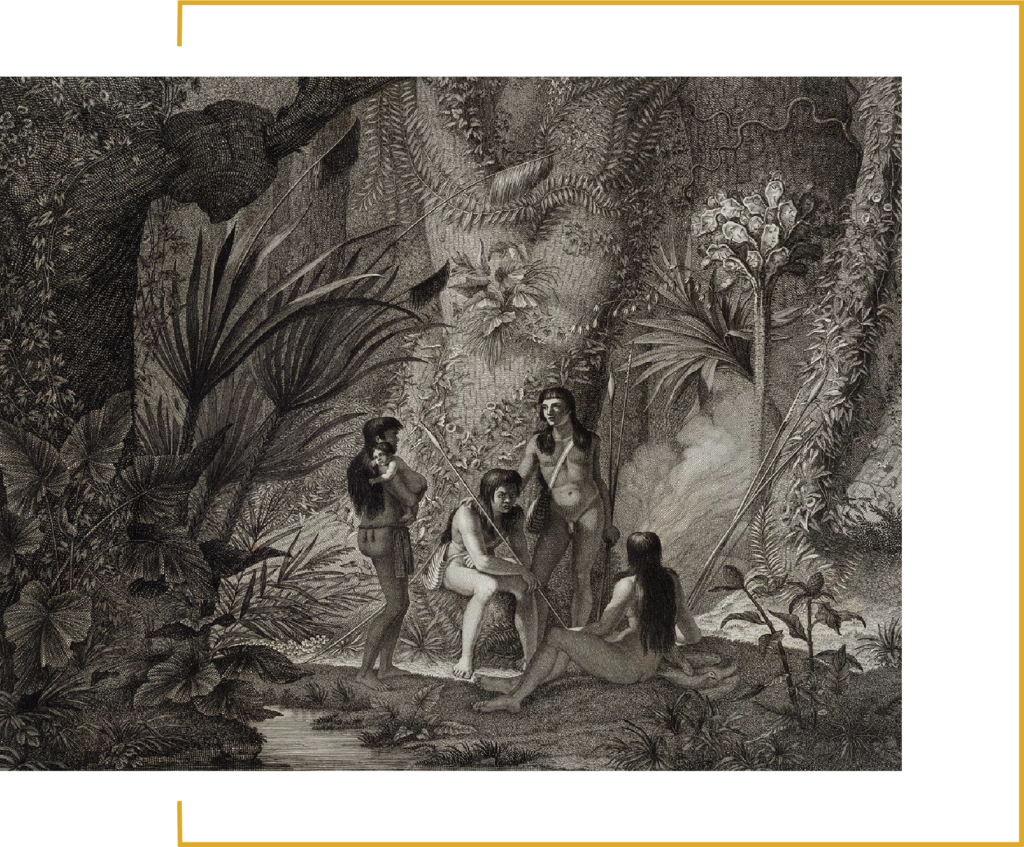

Thomas Ender
Watercolor on paper, 19.5 x 27.7 cm
Geyer Collection – Imperial Museum/Ibram/Secult/MTur
A view to Rio de Janeiro


Thomas Ender
Watercolor on paper, 19.5 x 27.7 cm
Geyer Collection – Imperial Museum/Ibram/Secult/MTur
A view to Rio de Janeiro
The landscape of Rio de Janeiro has long dazzled travelers from overseas. As the capital of colonial Brazil, from 1763 onwards, Rio was the port of entry for most foreigners arriving in the country. However, for most of the colonial period, the appearance of the city remained little known outside Portuguese dominions. With the opening of Brazil to trade with other nations, after 1808, followed by Independence in 1822, images of Rio began to circulate with greater facility. Thanks not only to landscape painting, but above all to the production of prints and lithographs, the city’s major landmarks – such as the Sugar Loaf, Corcovado, the church of Our Lady of Gloria and Morro do Castelo (Castle Hill) – became known all over the world.
Internationalization brought trade, diplomatic missions, and scientific expeditions. Along with them came numerous artists attracted by the promise of the new country and its stunning nature. Many were from German-speaking lands. Their contribution to the iconography of Rio de Janeiro is evidenced by the works exhibited in this room.

Eduard Hildebrandt
Church of Santa Luzia, c. 1844
Geyer Collection – Imperial Museum/Ibram/Secult/MTur
The 19th century was a period of expansion and growth for the city of Rio, which burst the limits of its old center to encompass new neighborhoods and suburbs. The gaze of artists documented those changes, revealing a mixture of enchantment with natural beauty and fascination with the customs of a society in the throes of coming into being. The ubiquity of slavery did not escape the attention of painters, lurking like a shadow in the sunny landscape.

Imagining Brazil
Art Exhibition The Germanic Gaze at the Genesis of Brazil
Curatorship Maurício Vicente Ferreira Júnior and Rafael Cardoso

